Since last week’s trade deadline, four teams have promoted a player from a two-way contract to a 15-man roster spot — the Celtics (Sam Hauser), Thunder (Aaron Wiggins), Rockets (Daishen Nix), and Heat (Caleb Martin) all took advantage of roster openings to make such a move.
For a playoff-bound team like Miami, promoting a two-way player to the 15-man roster ensures he’ll be eligible to play in the postseason.
That’s not exactly a pressing concern for a team like Oklahoma City or Houston, but it still made sense for them to promote Wiggins and Nix, respectively, because they were able to lock those rookies up to four-year contracts that will be worth the minimum salary going forward. Both Wiggins and Nix have non-guaranteed third and fourth years on those deals, so the Thunder and Rockets will have the ability to bail early if their investments don’t work out.
Even after that flurry of promotions, there are still several players around the NBA on two-way contracts who are candidates to get new deals before the end of the regular season.
Here’s a closer look at which players could be next in line for a bump up to the 15-man roster:
 Amir Coffey (Clippers)
Amir Coffey (Clippers)
Coffey has emerged as a regular rotation player for the Clippers this season, averaging 22.2 minutes per contest in 48 games (20 starts). He hasn’t missed a game or played fewer than 13 minutes since December 20 and is averaging 8.4 PPG and 3.0 RPG with a solid shooting line (.459/.380/.886).
The Clippers don’t currently have an open spot on their 15-man roster, so there’s no clear path for Coffey to sign a standard contract unless someone is waived. Newly-acquired swingman Rodney Hood or forward Semi Ojeleye are probably be the best candidates to be released — L.A.’s deadline deal to acquire that duo from the Bucks appeared to be more about tax considerations than about targeting those specific players.
Kessler Edwards (Nets)
Like Coffey, Edwards has been a regular contributor lately, starting 19 of 20 Brooklyn’s games. And like the Clippers, the Nets have a full 15-man roster, creating a temporary roadblock for an Edwards promotion.
It’s trickier finding expendable pieces on the Nets’ roster. Bruce Brown, James Johnson, and Blake Griffin are among those on expiring contracts and they haven’t exactly been setting the world on fire, but they’ve been rotation players when healthy. Jevon Carter has been in and out of the rotation, but is owed a guaranteed $3.9MM salary next season.
Edwards slumped badly entering the All-Star break, averaging 2.3 PPG on 18.9% shooting in his last eight games. If that trend continues, the Nets probably won’t need to find room for him on their 15-man squad. But if he bounces back, the team may want to ensure he’s playoff-eligible.
Jose Alvarado (Pelicans)
Alvarado appeared in just eight of New Orleans’ first 35 games, then played in the next 23 before getting a DNP-CD on Thursday. The addition of CJ McCollum may limit Alvarado’s playing time going forward, but the rookie has proven he’s capable of stepping in and providing the Pelicans with solid minutes. The team’s open roster spot could be earmarked for him or fellow two-way player Gary Clark.
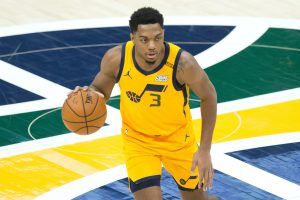 Trent Forrest (Jazz)
Trent Forrest (Jazz)
Forrest has had a nice February for Utah, putting up 8.0 PPG, 4.1 APG, and 1.6 SPG on 52.4% shooting in seven games (22.6 MPG). The Jazz have an opening on their roster and could create a second one if they decide Juan Hernangomez isn’t in their plans. I’d expect Forrest to claim one of those spots by the end of the season, though the in-the-tax club may prefer to hold off for a few more weeks in order to keep its tax bill in check.
Justin Champagnie (Raptors)
Champagnie’s role as a rookie has been inconsistent, but the Raptors like his potential and will probably try to sign him to a multiyear deal before the end of the season if they can negotiate favorable terms. Toronto currently has an open roster spot and still has some of its mid-level exception available to offer Champagnie a contract of up to four years.
Trendon Watford (Trail Blazers)
The Trail Blazers have a full 15-man roster for now, but that group includes at least one expendable veteran in Joe Ingles, who is on an expiring contract and will miss the rest of the season with a torn ACL. It’s also unclear if recently-acquired players like Eric Bledsoe, Elijah Hughes, and Didi Louzada will finish the season in Portland.
In other words, if the Blazers want to promote Watford, who has played in every one of the team’s games in 2022, there should be a path to do so.
Davon Reed (Nuggets)
At one point, Reed looked like a prime candidate for a promotion to the Nuggets’ 15-man roster, but his playing time has decreased in the last month, and if Denver wants to keep DeMarcus Cousins for the rest of the season, the veteran center would become the club’s 15th man.
A standard contract isn’t out of the question for Reed – injured forward Vlatko Cancar could be waived if the Nuggets need to make room for both Cousins and Reed – but the Nuggets may decide to see how the next few weeks play out before deciding whether or not to make the young wing playoff-eligible.
Duane Washington / Terry Taylor (Pacers)
With Indiana shifting into rebuilding mode, Washington and Taylor should both continue to play regularly, like they have in recent weeks. Taylor, in particular, has been very productive in limited minutes, averaging 9.5 PPG and 6.8 RPG on .598/.444/.769 shooting in 13 games (19.0 MPG).
The Pacers already have one open roster spot and could create a second one by waiving injured guard Ricky Rubio, though if they value his Bird rights, they’ll want to keep Rubio on the roster. Still, I’d be surprised if at least one of Washington and Taylor doesn’t sign a standard contract in the next month-and-a-half.
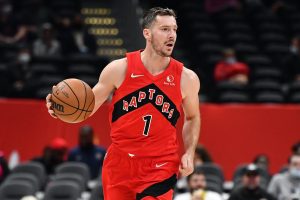 So far this season, we’ve seen Spurs guard
So far this season, we’ve seen Spurs guard 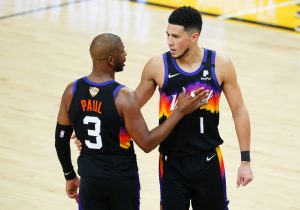 While the East has been the conference of parity this season, the Western Conference has been something quite different. Two teams, the Suns (48-10) and Warriors (42-17), have controlled the top of the standings for essentially the entire season — no other club has cracked the top two since November 10.
While the East has been the conference of parity this season, the Western Conference has been something quite different. Two teams, the Suns (48-10) and Warriors (42-17), have controlled the top of the standings for essentially the entire season — no other club has cracked the top two since November 10.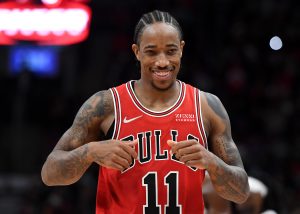 No team has been able to pull away from the pack in the East so far, with the 38-21 Bulls currently hanging onto the No. 1 seed by a half-game. If the season were to end today, Chicago’s .644 winning percentage would be the lowest mark for a conference’s top seed since Detroit went 50-32 (.610) in 2002/03.
No team has been able to pull away from the pack in the East so far, with the 38-21 Bulls currently hanging onto the No. 1 seed by a half-game. If the season were to end today, Chicago’s .644 winning percentage would be the lowest mark for a conference’s top seed since Detroit went 50-32 (.610) in 2002/03.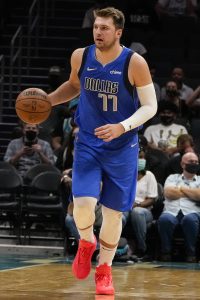 [RELATED:
[RELATED: